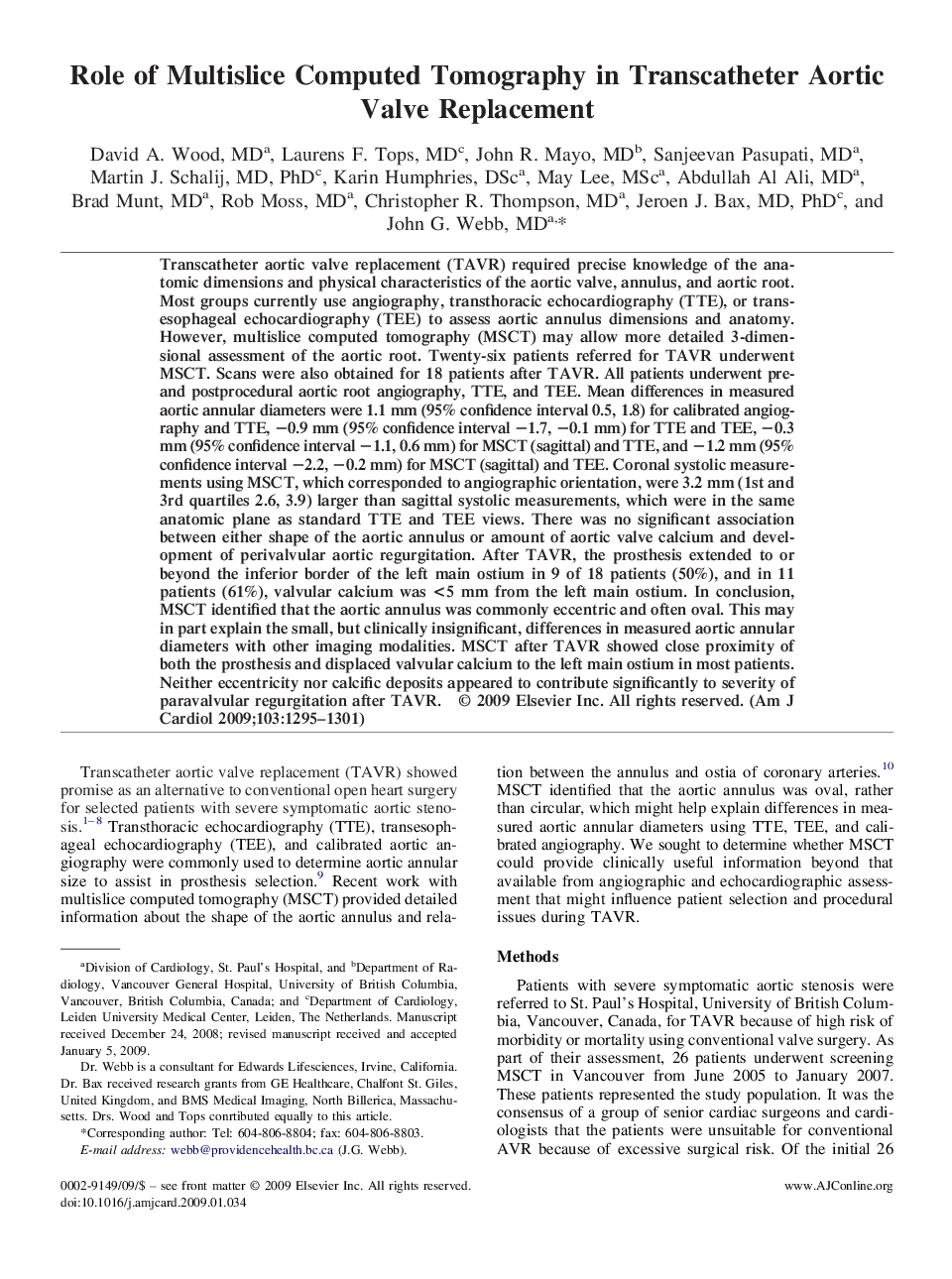| کد مقاله | کد نشریه | سال انتشار | مقاله انگلیسی | نسخه تمام متن |
|---|---|---|---|---|
| 2857782 | 1572302 | 2009 | 7 صفحه PDF | دانلود رایگان |

Transcatheter aortic valve replacement (TAVR) required precise knowledge of the anatomic dimensions and physical characteristics of the aortic valve, annulus, and aortic root. Most groups currently use angiography, transthoracic echocardiography (TTE), or transesophageal echocardiography (TEE) to assess aortic annulus dimensions and anatomy. However, multislice computed tomography (MSCT) may allow more detailed 3-dimensional assessment of the aortic root. Twenty-six patients referred for TAVR underwent MSCT. Scans were also obtained for 18 patients after TAVR. All patients underwent pre- and postprocedural aortic root angiography, TTE, and TEE. Mean differences in measured aortic annular diameters were 1.1 mm (95% confidence interval 0.5, 1.8) for calibrated angiography and TTE, −0.9 mm (95% confidence interval −1.7, −0.1 mm) for TTE and TEE, −0.3 mm (95% confidence interval −1.1, 0.6 mm) for MSCT (sagittal) and TTE, and −1.2 mm (95% confidence interval −2.2, −0.2 mm) for MSCT (sagittal) and TEE. Coronal systolic measurements using MSCT, which corresponded to angiographic orientation, were 3.2 mm (1st and 3rd quartiles 2.6, 3.9) larger than sagittal systolic measurements, which were in the same anatomic plane as standard TTE and TEE views. There was no significant association between either shape of the aortic annulus or amount of aortic valve calcium and development of perivalvular aortic regurgitation. After TAVR, the prosthesis extended to or beyond the inferior border of the left main ostium in 9 of 18 patients (50%), and in 11 patients (61%), valvular calcium was <5 mm from the left main ostium. In conclusion, MSCT identified that the aortic annulus was commonly eccentric and often oval. This may in part explain the small, but clinically insignificant, differences in measured aortic annular diameters with other imaging modalities. MSCT after TAVR showed close proximity of both the prosthesis and displaced valvular calcium to the left main ostium in most patients. Neither eccentricity nor calcific deposits appeared to contribute significantly to severity of paravalvular regurgitation after TAVR.
Journal: The American Journal of Cardiology - Volume 103, Issue 9, 1 May 2009, Pages 1295–1301